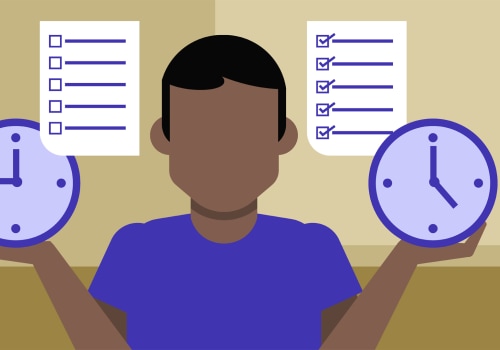As the world of technology advances and more people have access to digital resources, educational software and games have become an increasingly popular resource in helping to foster learning and development. With the right educational software and games, students can gain a deeper understanding of the subject matter, develop problem-solving skills, and even have fun while they learn. In this article, we’ll explore the different types of educational software and games available, their advantages, and how they can be used to enhance the educational experience. From interactive activities to immersive simulations, educational software and games offer a wide variety of options for making learning more engaging. We’ll discuss how these tools can be used to help students better understand their course material, develop their creativity and critical thinking skills, and even increase motivation to learn.
We’ll also discuss how teachers and parents can use these resources to help students succeed in their studies. First, it is important to understand the advantages and disadvantages of educational software and games. On the one hand, these tools can provide an engaging environment for students to learn, allowing them to explore difficult concepts in a fun and interactive way. On the other hand, some educational software and games are limited in scope, providing only surface-level knowledge. Next, we will look at the different types of educational software and games available. These range from simple flashcard programs to more complex simulations and virtual reality experiences.
It is important to note that not all software is suitable for all ages or learning levels. It is important to choose the right type of software for the intended audience. Finally, we will discuss how educational software and games can be used to promote educational progress. By using these tools in conjunction with traditional teaching methods, teachers can create a more engaging and interactive learning environment. Additionally, these tools can help students develop their problem-solving skills, critical thinking, and creativity. In conclusion, educational software and games have great potential for promoting educational progress.
They can provide an engaging environment for learning, allowing students to explore difficult concepts in a fun and interactive way. Additionally, these tools can help students develop their problem-solving skills, critical thinking, and creativity. It is important to choose the right type of software for the intended audience in order to maximize its effectiveness.
Advantages and Disadvantages of Educational Software and Games
Educational software and games offer a variety of advantages and disadvantages that should be taken into consideration before implementing them into the classroom. On one hand, they can be very powerful tools for learning and can provide students with engaging and interactive experiences.On the other hand, they can be expensive, and there are potential drawbacks to their use such as a lack of individualized instruction and limited oversight. One of the biggest advantages of educational software and games is that they can provide students with an engaging way to learn. By using interactive activities and games, students can develop their problem-solving skills, critical thinking, and creativity in an enjoyable environment. Additionally, these tools can also help to promote collaboration and communication between students. However, there are also some potential drawbacks that should be considered when using educational software and games.
For instance, many of these tools can be expensive and require a significant investment from schools. Additionally, without proper oversight, these tools can be misused or abused by students, leading to a negative learning experience. Additionally, these tools can also limit the amount of individualized instruction that teachers can provide to their students. In conclusion, educational software and games can be a powerful tool for learning and can help to promote educational progress. However, it is important to consider the potential advantages and disadvantages of using these tools in order to ensure that they are used effectively.
Types of Educational Software and Games
When it comes to educational software and games, there are a variety of options available.Some of the most popular types of educational software and games include:Educational SimulationsEducational simulations are interactive computer programs designed to simulate real-world processes and environments. These simulations can be used to teach students concepts such as science, technology, engineering, and mathematics (STEM). Examples of educational simulations include virtual labs, 3D modeling software, and flight simulators.
Educational Games
Educational games are designed to teach students various concepts in a fun and engaging way. These games can range from simple quizzes to more complex strategy games.By playing these games, students can develop their problem-solving skills, critical thinking, and creativity.
Educational Software for Learning Languages
There are many different types of educational software that can be used to help students learn a new language. These programs can range from simple vocabulary and grammar drills to more complex interactive tools that help students learn pronunciation, sentence structure, and cultural context.Coding Software
Coding software is designed to teach students the basics of coding and programming. These programs can be used to help students create their own computer programs or web applications.Using Educational Software and Games for Educational Progress
Educational software and games can be powerful learning tools for students of all ages. By utilizing educational software, students can develop their problem-solving skills, critical thinking, and creativity.It can also provide a fun and engaging way to explore difficult concepts. In this section, we will discuss how educational software and games can be used to promote educational progress. The first step in using educational software to promote educational progress is to identify the appropriate software for the student's needs. Different types of software are available, such as simulation games, learning activities, educational apps, and digital textbooks. Each type of software has its own advantages and disadvantages that must be considered when selecting the right one for the student.
For example, simulation games may provide a more engaging way to learn, while educational apps may be more suited to help with specific concepts. Once the appropriate software is selected, it's important to ensure that the student understands how to use it effectively. Depending on the type of software, this could include tutorials, instructional videos, or other guidance. Additionally, students should be encouraged to explore the software independently so that they can discover new ways to use it for learning. Finally, educators should provide feedback on how well the student is progressing with the software. This will help them identify areas that need improvement and give them an opportunity to adjust their approach accordingly.
Regular assessments can also be conducted to measure the student's understanding of the material. In summary, educational software and games can be powerful tools for learning. By identifying the right type of software for a student's needs and guiding them through its use, educators can help promote educational progress. With a combination of feedback and regular assessments, students can develop their problem-solving skills, critical thinking, and creativity. In conclusion, educational software and games offer a wide range of benefits to both students and educators. They provide an engaging environment for students to explore difficult concepts in a fun and interactive way, while also helping to develop their problem-solving skills, critical thinking, and creativity.
It is essential to select the right type of software for the intended audience in order to maximize its effectiveness. Furthermore, educators should be aware of the potential disadvantages of educational software and games and take appropriate steps to mitigate them. By doing so, educational software and games can be used to promote educational progress and further students’ learning.







